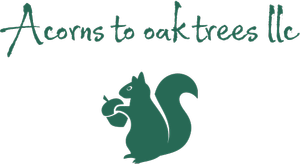Understanding SEO: The Basics for Digital Marketers
Mastering SEO for Content Strategy: A Digital Marketer's Guide to SEO

In the ever-evolving landscape of digital marketing, two crucial components stand out as pillars of success: content strategy and branding. While these concepts might seem distinct, they are intertwined in a way that can significantly impact your online presence. This guide will demystify the realm of SEO (Search Engine Optimization) and show you how to leverage it to enhance your content strategy and branding efforts.
Understanding SEO: The Basics
At its core, SEO is the practice of optimizing your online content to improve its visibility on search engines like Google, Bing, and Yahoo. When users search for specific keywords or phrases, search engines aim to provide the most relevant and valuable results. This is where SEO comes into play - by optimizing your content, you increase the likelihood of your website appearing on the first page of search results.
The Marriage of Content Strategy and Branding
Content strategy involves planning, creating, distributing, and managing content to attract and engage your target audience. On the other hand, branding is about shaping the perception of your company, creating a unique identity, and fostering a sense of trust and familiarity among your audience. Integrating SEO into both these aspects can yield powerful results.
1. Keyword Research
Keyword research is the foundation of SEO. By identifying the keywords and phrases your target audience uses when searching for relevant information, you can tailor your content to match their intent. Integrating these keywords naturally into your content helps search engines understand what your content is about, improving its chances of ranking higher.
2. Quality Content Creation
High-quality content is not only valuable to your audience but also to search engines. When you provide well-researched, informative, and engaging content, visitors are more likely to spend time on your website, reducing bounce rates and indicating to search engines that your content is relevant. This can positively influence your search engine rankings.
3. On-Page Optimization
On-page optimization involves optimizing individual web pages for specific keywords. This includes crafting compelling meta titles and descriptions, incorporating headers, using relevant images and multimedia, and ensuring your content is structured logically. These practices make your content more user-friendly and help search engines understand its relevance.
4. Link Building
Link building involves getting other reputable websites to link to your content. When authoritative sites link to yours, it signals to search engines that your content is trustworthy and relevant. This can have a significant impact on your search engine rankings.
5. Mobile Responsiveness and User Experience
In today's mobile-driven world, ensuring your website is mobile-responsive is crucial. Additionally, providing a seamless user experience, including fast-loading pages and easy navigation, can reduce bounce rates and improve the time users spend on your site - both of which can positively impact your SEO.
6. Social Signals
While the direct impact of social media on SEO is debated, there's no doubt that a strong social presence can indirectly benefit your SEO efforts. Sharing your content on social platforms can increase its visibility, potentially leading to more inbound links and greater engagement.
Strengthening Your Brand Through SEO
Integrating SEO into your content strategy not only boosts your search engine rankings but also supports your branding efforts:
- Consistency: As you optimize content around specific keywords, your messaging becomes more consistent. This reinforces your brand's core message and values.
- Authority: By producing high-quality content and gaining authoritative backlinks, you position yourself as an industry expert. This authority adds credibility to your brand.
- Recognition: Higher search engine rankings lead to increased visibility. The more often users encounter your brand in search results, the more recognizable and trusted it becomes.
- User-Centric Approach: SEO focuses on delivering what users are searching for. This aligns perfectly with creating a user-centric brand that caters to your audience's needs.
In conclusion, SEO isn't just about climbing search engine rankings. It's a strategic tool that, when incorporated into your content strategy and branding efforts, can elevate your digital marketing game. By understanding your audience, creating valuable content, and optimizing it for search engines, you'll not only attract more visitors but also build a brand that resonates and connects with your audience on a deeper level. So, dive into the world of SEO with your content and branding hats on, and watch your digital presence flourish.
Using Social Media to Make Money Online, Digital marketing, travel tips and destination ideas, saving money




